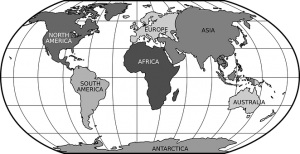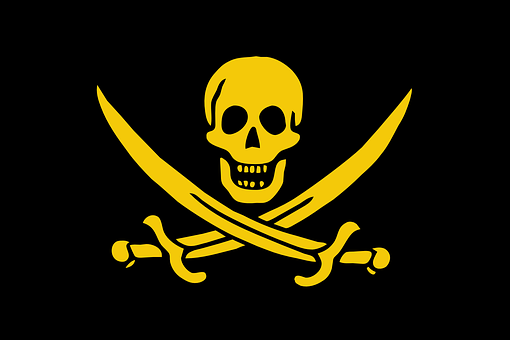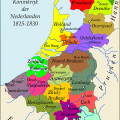De Faakto Intelligence Research Observatory
Modern Piracy Primer-An Open Source Study
Methodology
OSINT–research
Background & Analysis
Modern piracy is a criminal activity that is driven by ideology, profit and occasionally state sponsorship. Grassroots cause of modern piracy stem from, failed central government, lack of autonomous security and the economics surrounding unlimited poverty. Without legal consequences and employment opportunities, impoverished maritime populations often turn to piracy as a means of subsistence. Fishermen, as guardians of the sea, ideologically turn to piracy when foreign fishing fleets encroach on and overfish established fishing grounds. The same fishermen grow to be opportunistic, upon realization that their maritime skills sets are more valuable as cargo ship pirates; in comparison to high-jacking poor fishing vessels in the wrong area. Piracy is validated through social acceptance & community support when financial benefits & employment opportunities are transferred to the local population. The cost of piracy in 2017 was approximately $2 Billion in East & West Africa alone. (OBP, 2018) Piracy is being countered on a global scale through international anti-piracy patrols. The reality is, there is not enough navel presence to influence piracy activity. Private maritime security contractors are providing counter piracy services as a means of securing cargo vessels and accompanying crew at sea. Private maritime security forces augmented with less lethal technical countermeasures are managing to harden commercial marine targets from pirate attack. Improved nautical security is displacing pirates and forcing them to seek softer targets in more remote locations. Despite consequences, pirates remain persistent, resourceful operators that continue to present as a fundamental security challenge for the maritime shipping industry.
Defining Modern Piracy
According to the International Maritime Bureau (IMB)
• “Piracy is the act of boarding any vessel with an intent to commit theft or any other crime, and with an intent or capacity to use force in furtherance of that act” (ResearchGate, 2009)
• Piracy is distinguished from simple hijacking in two respects:
• First, an act of piracy requires that two vessels are involved in the incident
• Second, an act of piracy requires that the crime has been undertaken for private, not political, purposes (ResearchGate, 2009)
• The IMB’s definition covers actual or attempted attacks, whether the ship is berthed, at anchor, or at sea
• Petty thefts are excluded unless the thieves are armed (ResearchGate, 2009)
Grassroots Cause of Modern Piracy
Security & Stability
Lack of regional government stability
• No central government
• No legal consequences
• Corrupt law enforcement
• Ineffective court systems
Poverty
• Impoverished nation
• Lack of employment opportunities
• Pirate activities socially acceptable as survival mechanism
Territorial-Resource Dispute
• Encroaching on a nations traditional fishing grounds
• Fishermen acting as fishing ground guardians, turn to piracy as a protection mechanism
• Fisherman-pirates attack, board and impound foreign fishing vessels
Community Regional Support for Ideological Piracy Activities
• Guardian fisherman turning to piracy are often supported by local community
• Financial benefits in community-confiscated fish, vessel, cargo, ransom logistics/support, salvage
• Monetary gains are returned to communities’ economy (ThoughtCo, 2018)
• Piracy may be motivated by anti-western ideology
Community Regional Support for Piracy & Profit
• Impoverished turn to piracy for money
• Fisherman turn to piracy when recognize that maritime skills are suitable for hijacking & ransom (ThoughtCo., 2018)
• Proceeds of piracy returned to the community-fosters social acceptance
State Sponsored Piracy
• Using a nations Coast Guard vessel or disguising a vessel as a pre-text to board ships and carry out piracy operations
• Rescue calls go unanswered-assistance is not provided
• State assisted piracy is denied by host government
• A strategy to disrupt trade & commerce with competing nations
• A methodology of navel “Proxy War” against opposition
Lack of Navel Resources
• Many countries implement and participate in anti-piracy patrols. NATO and the European Union conduct anti-piracy activities as well; however there are not enough navel presence to influence piracy activity

What areas are active with piracy?
South East Asia and Indian Sub-Continent
• Bangladesh-Bay of Bengal (ICC, 2018)
• China, Malaysia & Indonesia South China Sea
• India-Indian Ocean, the Strait of Malacca
Africa and Red Sea
• Red Sea / Gulf of Aden / Somalia / Arabian Sea / Indian Ocean (ICC, 2018)
• Gulf of Aden: The entrance to the Red Sea (Marine Insight, 2016)
• Arabian Sea: The Gulf of Oman (Marine Insight, 2016)
• Somalia
• Indonesia
• Benin in Africa-(Cotonou)
• Guinea: Conakry
• Gulf of Guinea spans a major portion of North-Western and Southern Africa (Angola)
• Ivory Coast: Abidjan
• Nigeria in the Western part of Africa
• Lagos
• Off Bayelsa / Brass / Bonny Island / Port Harcourt
• The Congo: Pointe Noire
• Togo (Lome) (ICC, 2018)
• Gulf of Guinea spans a major portion of North-Western and Southern Africa (Angola)
• Nigeria in the Western part of Africa
South and Central America and the Caribbean Waters
• Ecuador
• Peru
• Venezuela
• Panama
• Guatemala
• Belize
• Haiti
• Dominican Republic
• Dutch East Indies-Caribbean Netherlands

Types of Vessels Targeted by Pirates
• Oil tankers
• Chemical Tankers
• Container ships
• General cargo
• Bulk carriers
• Product tankers
• Tugs
• Merchant ships
• Yachts
• Fishing vessels
• Yachts-are frequently targeted in the Caribbean & Latin Americas, attacks are usually less sophisticated with fewer weapons attacks & violence
What is the Economic cost of Piracy?
According to Oceans Beyond Piracy, Economic Cost of Piracy in 2017
• East Africa is $1.4 Billion
• West Africa is $818.1 Million
• Asia- there were 99 Pirate incidents in 2017; cost is difficult to calculate due to complexity of maritime activity
• Latin America and the Caribbean-there were 71 Pirate incidents in 2017; cost is difficult to calculate due to complexity of maritime activity (OBP, 2018)
Modus Operandi Piracy
Open Sea
• Mother vessels patrol hunting grounds, away from coast
• Smaller skiffs and dhows attack, then board vessels
• Vessels are robbed and or high jacked
• Pirates may sail hijacked ship to anchoring location, ship is concealed, cargo unloaded, kidnap victims are confined
• Vessel conversion, stripped, salvaged, sold
• Cargo sold or ransomed
• Ships crew ransomed
Anchorage Areas
• Ships and vessels are targeted at anchor or preparing to anchor
• Pirate-robbers normally attack vessels during the night (ICC, 2018)
Conventional Kidnapping & Targets of Opportunity
• Pirates are resourceful and have kidnapped guests from luxury resorts for ransoming
• Organized pirate gangs will exploit any economic target of opportunity
State Sponsored Piracy
• There have been piracy incidents where the vessel and boarding party have been disguised as government coast guard authorities
• Maritime distress calls have gone unanswered by regional maritime anti-piracy & rescue authorities
• These incidents likely indicate high level government complicity (ResearchGate, 2009)
Pirate Crimes
• Kidnap ransom
• Simple robbery
• Armed robbery
• Vessel Hijacking
• Cargo theft (ICC, 2018)
• Phantom ship-ship is stolen, re-registered, renamed and used in legal shipping (Listverse, 2018)
Pirate Equipment
• Pistols, rifles, automatic weapons
• Rocket Propelled Grenades
• Knives & machetes (ICC, 2018)
• Boarding ladders
• Maritime hand held & base radios
• Satellite phones
• Optics, binoculars
• Skiffs & dhows (often Stolen)
• Mother ship (often stolen)
Maritime Counter Piracy Equipment
LRAD
• Sonic cannon-non-lethal anti-piracy device
• Causes pain inducing sound beam to drive away the pirates
• Produces high-pitched noise that is higher than the tolerance level of an average human being (Marine Insight, 2017)
High pressure fire hoses
• Delivers powerful and impenetrable stream of water that blows away pirates trying to board the ship
• Fills the pirates’ boats to slow them down and hinders manoeuvrability (Marine Insight, 2017)
Anti-piracy laser device
• Non-lethal laser beam to provide a visual warning to pirates and distract them temporarily (Marine Insight, 2017)
Electric Secure Fence
• Electric fence which surrounds the ship and prevents pirates from climbing aboard (Marine Insight, 2017)
Nets-Boat Traps
• Boat trap is a type of ballistic net which can be used to stop pirate boats when they come near a merchant ship
• In the water, the net ensnares the propellers, disabling the pirates vessel (Marine Insight, 2017)
Slippery foam or Anti-traction material
• Non-lethal substance which can be used to make the deck or sides of a ship slippery preventing pirates from boarding (Marine Insight, 2017)
Liquid Deterrent System
• Showers pirates with slick, foul-smelling green liquid, which stinks and burns (Marine Insight, 2017)
Razor Wire Canister
• Canisters with sharp razor wires to prevent pirates from boarding the ship
• The wires act as a barrier between the pirates and the ship (Marine Insight, 2017)
Compressed Air Cannon
• Device which uses compressed air to fire a variety of projectiles
• The power and lethality of the projectiles used can vary according to the distance of the pirates from the ship (Marine Insight, 2017)
P Trap Anti Piracy-System
• System carries thin lines which float at the water level around the sides of the vessel. When pirate skiffs/boats come in contact with the lines, entangles with the engine (Marine Insight, 2017)
Anti Piracy Curtain
• Method to keep pirates from climbing the ships
• The system consists of a series of hoses which are dangled on the sides of the vessel
• Sea water is passed through the nozzles at a force of 0.2 Mega Pascal, which makes the hoses go in unpredictable whirling motion, generating enough force to seriously hurt anyone who gets in the way (Marine Insight, 2017)
Stun grenade or flash grenade
• Non-lethal anti-piracy device which produces a blinding flash of light and loud noise to temporarily disorient pirates (Marine Insight, 2017)
Dazzle gun
• Laser weapon which uses green light to disorient and temporary blind the pirates (Marine Insight, 2017)
Rubber ball grenade
• Non-lethal grenade sprays rubber bullets on detonation
• The anti-piracy grenade also produces light and sound which can be used to deter pirates (Marine Insight, 2017)
Active Denial System
• Pain Ray is a non-lethal weapon which transmits a narrow beam of electromagnetic energy to heat the skin without causing permanent damage
• The wave penetrates beneath the skin which causes unbearable burning sensation (Marine Insight, 2017)
Molotov cocktail
• Used by the crew of merchant ships not provided with anti-piracy weapons or armed guards (Marine Insight, 2017)
Tasers
• Non-lethal conductive energy weapon
• Delivers an electric shock that temporarily causes the pirates to lose neuro muscular control (Marine Insight, 2017)
Citadel
• A fortified safe room on the vessel where the crew of the ship can hide during a pirate attack and subsequent boarding
How do maritime crews defend against piracy?
Use of Citadels
• Safe rooms where the ship can be monitored controlled and sailed by crew until pirates abandon the vessel or navy anti-piracy force arrives
Maritime Security Contractors
• Security guards, maritime marshals, contract navel security
• Deploy anti-boarding measures
• Use of force-lethal & less than lethal
Security watch decoy mannequins
• Pirates are deterred by presence of armed guards on watch; mannequins provide illusion of a large maritime guard force
Early warning
• Radar watches
• Early detection skiff watches
• Maritime security vigilance in high risk areas
Avoid Predictable schedules
• Vessel security may be compromised by the masters predictable schedule, varying routes, ports of call may be difficult to alter due to delivery contracts, perishable cargo, seasons & weather, changing standard foreseeable practises may reinforce maritime security and help counter piracy (ResearchGate, 2009)
Environmental Concerns in Piracy
• One of the most serious dangers associated with modern piracy is the risk of an environmental disaster
• Scenarios where ships are attacked near shoals & narrow channels could cause the vessel to ground or crash, the consequences are chemical or oil spills damaging the maritime environment
Confusing Fisherman for Pirates
• Maritime anti-piracy vigilance has understandably created an atmosphere of tension. Fishermen often carry small arms to protect their catch. Fishermen sometimes approach merchant vessels to wave them off, avoiding collision with fishing nets. These circumstances have created tension between fisherman and commercial vessels. (ICC, 2018) An incident off the coast of India occurred where Italian Marines securing a cargo ship shot and killed Indian fisherman thought to be pirates (Council on Foreign Relations, 2012)
Resources
The Pirates are Winning-New York Book Review (2010) https://www.nybooks.com/articles/2010/10/14/pirates-are-winning/?pagination=false
10 Maritime Piracy Affected Areas around the World-Marine Insight (2016) https://www.marineinsight.com/marine-piracy-marine/10-maritime-piracy-affected-areas-around-the-world/
What is “Citadel” Anti-Piracy Method?-Marine Insight (2016) https://www.marineinsight.com/marine-piracy-marine/what-is-citadel-anti-piracy-method/
What Is the Cause of Sea Piracy? ThoughtCo. (2018) https://www.thoughtco.com/causes-of-sea-piracy-2293171
Criminological Theories and the Problems of Modern Piracy-ResearchGate (2009) https://www.researchgate.net/publication/265323441_Criminological_Theories_and_the_Problems_of_Modern_Piracy
Combating Maritime Piracy-Council on Foreign Relations (2012) https://www.cfr.org/backgrounder/combating-maritime-piracy
10 Shocking Cases Of Modern Piracy-ListVerse (2017) https://listverse.com/2017/02/27/10-shocking-cases-of-modern-piracy/
Piracy & Armed Robbery Prone Areas and Warnings-International Chamber of Commerce (2018) https://www.icc-ccs.org/index.php/piracy-reporting-centre/prone-areas-and-warnings
Maritime Piracy 2017-Oceans Beyond Piracy (2018) http://oceansbeyondpiracy.org/reports/sop/summary






